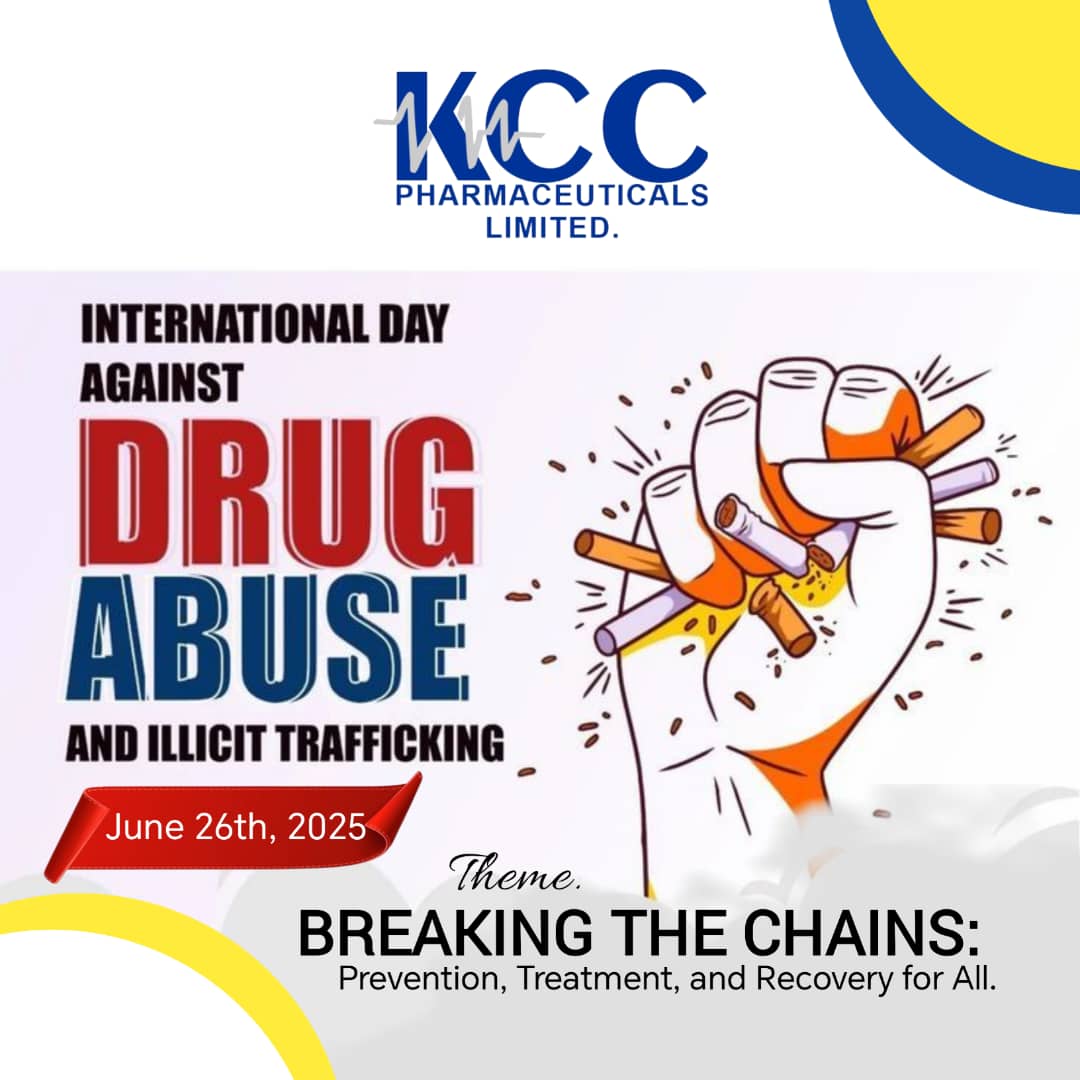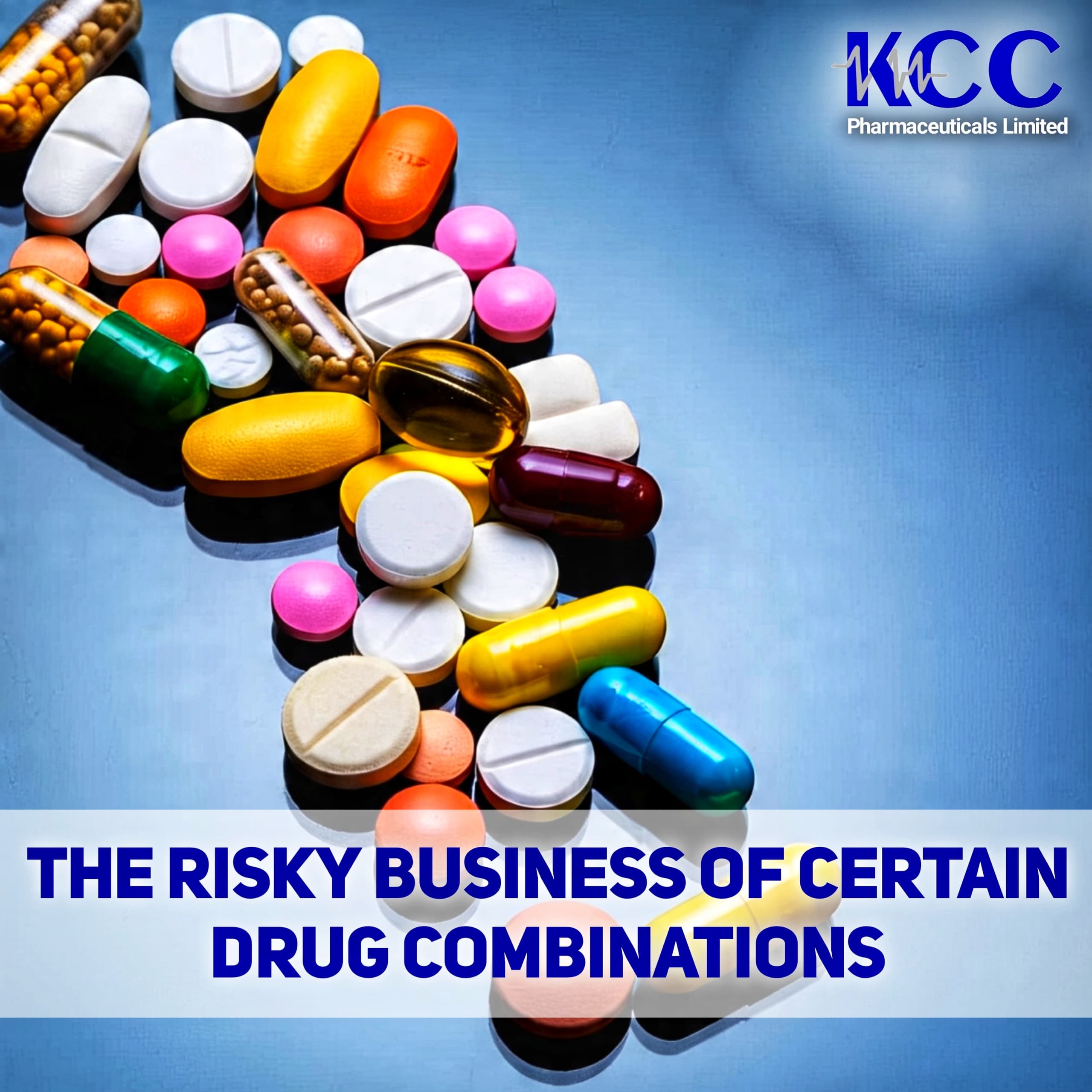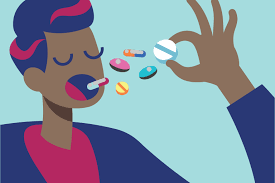KNOWLEDGE

INTERNATIONAL DAY AGAINST DRUG ABUSE AND ILLICIT TRAFFICKING, 2025
Today, the world pauses to confront a crisis that continues to quietly steal dreams, destroy health, and end lives. As we mark this year’s International Day Against Drug Abuse and Illicit Trafficking, we at KCC Pharmaceuticals Limited join voices across the globe to reaffirm a simple but powerful truth: prevention is not just the first step—it is the strongest one. At KCC Pharmaceuticals, our mission goes far beyond producing high-quality medicines. We are deeply invested in protecting and advancing public health. This commitment extends into education, advocacy, and building stronger, safer communities. We believe that it is far more powerful to educate and empower individuals before they ever fall into the grip of substance abuse than to try and mend the broken pieces after addiction takes hold. Today, we add our voice to the global campaign and boldly declare: prevention works—and the time to invest in it is now. Every smile we help protect, every life we touch through medicine or health education, reminds us of the real reason we exist. But medicine alone is not enough. We are part of the communities we serve. We live among the people affected. And so, our work must also address the root causes of drug abuse—challenges like social inequality, mental health struggles, peer pressure, unemployment, and the lack of accessible, accurate health information. Substance abuse is not merely a personal failure; it is often a societal response to pain, neglect, and silence. While treatment and rehabilitation are essential, they often come after lives have already been altered. Prevention, on the other hand, intervenes before the damage is done. It is proactive. It is cost-effective. It saves lives before they need saving. Prevention starts with awareness, thrives through education, and is sustained by strong support systems. It looks like a teenager who chooses to say no to drugs because their school taught them how to make wise decisions. It’s the parent who knows where to seek help when things begin to unravel. It’s the community that normalizes talking about mental health instead of burying it in shame. It’s organizations like KCC Pharmaceuticals, using our voice and platforms to share knowledge, advocate for change, and contribute meaningfully to public health transformation. We have seen firsthand the devastation drug misuse can cause—overburdened healthcare systems, broken families, and lost futures. But we also know that there is a better way. When we invest in prevention—when we teach, guide, support, and care—we break the cycle before it begins. Research confirms what we’ve long believed: every amount spent on prevention saves many more in treatment, recovery, and law enforcement. That’s not just data—it’s a roadmap for meaningful impact. As a pharmaceutical company, we also recognize our responsibility in this fight. Our role includes safeguarding against the misuse of medicines through responsible distribution, robust pharmacovigilance, and continuous patient education. Preventing diversion and misuse of pharmaceutical products is a commitment we uphold with vigilance and purpose. But we also know this fight cannot be won in isolation—it requires collective effort. This is why we at KCC Pharmaceuticals remain steadfast in our vision to promote health beyond the walls of our production lines. We support community-based education. We champion awareness campaigns. We envision a world where health is not only restored after illness, but preserved through foresight and proactive care. And today, we extend this mission to you—our partners, clients, communities, and allies in public health. Let’s start conversations. Let’s support prevention programs. Let’s listen to the voices of our youth. Let’s share accurate information and speak life where there is struggle. In a world weighed down by crises that could have been prevented, choosing to invest in prevention is not only wise—it is profoundly compassionate. Together, we can create healthier minds, safer neighborhoods, and a future where fewer lives are shadowed by addiction. From all of us at KCC Pharmaceuticals Limited, we declare with unwavering belief: prevention is possible, and the evidence is clear. Now is the time to invest in it.

The Risky Business of Certain Drug Combinations
Medicines are designed to heal, ease pain, and restore health—but when combined recklessly, even the most familiar drugs can turn harmful. This lesser-known danger often hides in plain sight: inside our medicine cabinets, in self-medication habits, and even in prescriptions from multiple healthcare providers that don’t “talk” to each other. At KCC Pharmaceuticals Limited, we believe one of the most powerful tools for safeguarding public health is knowledge—and it begins with understanding the risks of certain drug combinations. Many people assume that because a medication is over-the-counter, it’s inherently safe. But drug interactions don’t care if the pill came with a prescription or not. Two commonly used medications can silently interact in your body in ways that reduce effectiveness, increase side effects, or trigger harmful reactions. For instance, combining a cold medication that contains pseudoephedrine with certain antidepressants can lead to a dangerous spike in blood pressure. Taking a painkiller like ibuprofen alongside blood pressure medication can reduce the effectiveness of your treatment and stress your kidneys. Even natural remedies and supplements can be culprits—St. John's Wort, for example, can interfere with drugs used to treat HIV, depression, or prevent organ rejection. What makes drug interactions especially tricky is that symptoms might not always be immediate or dramatic. Sometimes, they show up subtly—as fatigue, dizziness, or unusual mood swings—making it easy to misattribute the problem to stress or illness. That’s why it’s essential to involve qualified healthcare professionals every time you’re starting a new medication, even if it seems insignificant. Pharmacists and doctors can check for potential interactions and adjust your medications accordingly. In our experience at KCC Pharmaceuticals Limited, we’ve found that patient safety is as much about education as it is about innovation. With every product we develop, safety is a priority. But safety is a shared responsibility. Consumers must also be vigilant. Read the labels. Ask questions. Avoid mixing medications unless specifically advised by a healthcare provider. Never rely on guesswork or past experience—because the body changes, conditions change, and so do potential risks. Drug combinations can be powerful allies when prescribed carefully. But unsupervised, they can become silent threats. The good news is that most medication-related problems are preventable—with the right information, timely consultation, and proactive decision-making. Together, let’s make drug safety a shared habit. #KCCPharmaceuticals #DrugSafety #MedicationAwareness #Pharmacovigilance #SafeMedicineUse

"Malaria Ends With Us: Reinvest, Reimagine, Reignite."
Malaria; also called plasmodium infection, is a life-threatening infection spread to humans by female anopheles mosquitoes. It is both preventable and curable. The infection is caused by a parasite and does not spread from person to person. Symptoms can be mild or life-threatening. Mild symptoms are fever, chills and headache. Severe symptoms include fatigue, confusion, seizures, and difficulty breathing.Infants, children under 5 years, pregnant women, travellers and people with HIV or AIDS are at higher risk of severe infection. Malaria can be prevented by avoiding mosquito bites and with medicines. Treatments can stop mild cases from getting worse. However, the ultimate goal should be to eradicate this troublesome evil as this has been proven possible. A lot number of countries have been certified Malaria Free by WHO. A few of this Countries are Africa countries: Algeria (2019), Egypt (2024), Morocco (2010). This implies that other countries can deploy measures to eradicate this unnecessary challenge. Malaria mostly spreads to people through the bites of some infected female Anopheles mosquitoes. Blood transfusion and contaminated needles may also transmit malaria. The first symptoms may be mild, similar to many febrile illnesses, and difficulty to recognize as malaria. If Left untreated, severe P. falciparum malaria can progress to severe illness and death within 24 hours especially in children. There are 5 Plasmodium parasite species that cause malaria in humans and 2 of these species – P. falciparum and P. vivax – pose the greatest threat. P. falciparum is the deadliest malaria parasite and the most prevalent on the African continent. P. vivax is the dominant malaria parasite in most countries outside of sub-Saharan Africa. The other malaria species which can infect humans are P. malariae, P. ovale and P. knowlesi. Malaria is treated with various medications mediating plasmodium eradication through various mechanisms. The Artemisinins ( Arteether, Artemether, Artesunate, dihydroartemisinin piperaquine), The quinolines (Chloroquine, amodiaquine), the atovaquone, certain antibiotics (doxycycline, Clindamycin). Currently, a number of vaccines have been developed to further curb the menace of malaria. Ultimately, a malaria free World is a possibility with all hands. Will you be in Support? Pathophysiology of Malaria infection The lifecycle of plasmodia is complex. It occurs in two different stages. Asexual and Sexual stages. Human infection begins when a female anopheles mosquitoes innoculates plasmodial sporozoites from it's salivary gland during a blood meal. These microscopic motile forms of parasite are carried rapidly blood stream to liver, where they invade hepatic parenchymal cells and begin a period of asexual reproduction. By this application process (known as intra-hepatic schizogony), a single sporozoites eventually may produce several daughter merozoites. The swollen infected liver cell eventually bursts discharging motile merozoites into the blood stream. These then invade erythrocytes become trophozoites. As the trophozoites enlarge, species specific characteristics become evident, pigment becomes visible and the parasite assumes irregular or amoeboid shape. By the end of 48hours of intraerythrocytic cycle, the parasite has consumed nearly all the haemoglobin and grown to occupy most of the Red Blood Cells. It is now called Schizont. The Red Blood Cycle ruptures to release merozoites after a series of asexual cycles or immediately after release from the liver. Some of the parasites develop into morphologically distinct, longer lived sexual forms (gametocytes) that transmit malaria. After being infested in the blood meal of a bitting anopheles mosquitoes, the male and female gametocytes form form a zygote, mature into an ookinete, which penetrates and encysts in the mosquito wall. The resulting Oocysts expands by asexual division until it bursts to liberate motile sporozoites which then migrate into hemolymph to the salivary gland of mosquito to await innoculation into another human at the next feeding. Malaria is treatable by a number of medications; ( Drug classes) Aryl aminoalcohol compounds: 4-aminoquinolines: , chloroquine, amodiaquine, piperaquine 8-aminoquinolines: Primaquine, tafenoquine Other aryl aminoalcohols: Mefloquine, halofantrine, lumefantrine Antifolate compounds: Pyrimethamine, proguanil, sulfadoxine (mostly used as prophylactic agents for prevention of malaria infection) Artemisinin compounds: Artemisinin, artesunate, artemether, dihydroartemisinin, arteether (the most widely used and by far the most effective) Other classes: Atovaquone: A unique compound with a distinct mode of action Antibacterial drugs: Some antibacterial drugs like tetracycline, doxycycline, and clindamycin also exhibit antiplasmodial activity Symptoms The most common early symptoms of malaria are fever, headache and chills.Infants, children under 5 years, pregnant women, travellers and people with HIV or AIDS are at higher risk. Severe symptoms include: extreme tiredness and fatigue impaired consciousness multiple convulsions difficulty breathing dark or bloody urine jaundice (yellowing of the eyes and skin) abnormal bleeding. Prevention Malaria can be prevented by avoiding mosquito bites and by taking medicines. Lower the risk of getting malaria by avoiding mosquito bites: Use mosquito nets when sleeping in places where malaria is present. Use mosquito repellents (containing DEET, IR3535 or Icaridin) after dusk. Use coils and vaporizers. Wear protective clothing. Use window screens. Vector control Vector control is a vital component of malaria control and elimination strategies as it is highly effective in preventing infection and reducing disease transmission. The 2 core interventions are insecticide-treated nets (ITNs) and indoor residual spraying (IRS). Progress in global malaria control is threatened by emerging resistance to insecticides among Anopheles mosquitoes. However, new generation nets, which provide better protection against malaria than pyrethroid-only nets, are becoming more widely available and represent an important tool in global efforts to combat malaria. Anopheles stephensi presents an added challenge for malaria control in Africa. Originally native to parts of south Asia and the Arabian Peninsula, the invasive mosquito species has been expanding its range over the last decade, with detections reported to date in eight African countries. Preventive chemotherapies Preventive chemotherapy is the use of medicines, either alone or in combination, to prevent malaria infections and their consequences. It requires giving a full treatment course of an antimalarial medicine to vulnerable populations at designated time points during the period of greatest malarial risk, regardless of whether the recipients are infected with malaria. Preventive chemotherapy includes perennial malaria chemoprevention (PMC), seasonal malaria chemoprevention (SMC), intermittent preventive treatment of malaria in pregnancy (IPTp) and school-aged children (IPTsc), post-discharge malaria chemoprevention (PDMC) and mass drug administration (MDA). These safe and cost-effective strategies are intended to complement ongoing malaria control activities, including vector control measures, prompt diagnosis of suspected malaria, and treatment of confirmed cases with antimalarial medicines. Treatment Early diagnosis and treatment of malaria reduces disease, prevents deaths and contributes to reducing transmission. WHO recommends that all suspected cases of malaria be confirmed using parasite-based diagnostic testing (through either microscopy or a rapid diagnostic test). Malaria is a serious infection and always requires treatment with medicine. Multiple medicines are used to prevent and treat malaria. The choice of medication(s) is dependent on; the type of malaria whether a malaria parasite is resistant to a medicine the weight or age of the person infected with malaria whether the person is pregnant. The following are the most common medicines for malaria: Artemisinin-based combination therapy medicines are the most effective treatment for P. falciparum malaria. Chloroquine is recommended for treatment of infection with the P. vivax parasite only in places where it is still sensitive to this medicine. Primaquine should be added to the main treatment to prevent relapses of infection with the P. vivax and P. ovale parasites. For very severe cases; injectable forms of Artesunate and and arteether are highly recommended. And several others. Malaria vaccine Since October 2021, WHO has recommended broad use of the RTS,S/AS01 malaria vaccine among children living in regions with moderate to high P. falciparum malaria transmission. The vaccine has been shown to significantly reduce malaria, and deadly severe malaria, among young children. In October 2023, WHO recommended a second safe and effective malaria vaccine, R21/Matrix-M. Vaccines are now being rolled out in routine childhood immunization programmes across Africa. Malaria vaccines in Africa are expected to save tens of thousands of young lives every year. However, the impact will be optimum when other vector (mosquitoes) preventive approaches are in place. Message For Malaria Day Celebration The theme for World Malaria Day 2025 is; "Malaria Ends With Us: Reinvest, Reimagine, Reignite." This theme highlights the urgency of actions needed to end malaria, emphasizing continued investment, innovation, and commitment from the global community. The World Health Organization (WHO) and other partners are promoting this theme as a grassroots campaign to re-energize efforts at all levels. Zero Malaria is achievable if we so choose. A good number of countries have been certified Malaria Free by World Health Organization. Interestingly even certain African countries made the list; Algeria (2019), Egypt (2024), Morocco (2010), Nigeria (???). All hands should be on desk to promote zero Malaria campaign at all levels.

Disulfiram- like Reaction with Concomitant use of (Metro B) Metronidazole and Alcohol.
(Metro B); Metronidazole is an antibiotic belonging to the class of Nitro imidazoles. Metronidazole exerts it's antimicrobial activity by inhibiting Nucleic acid synthesis and thereby disrupting DNA and causing strand breakage. This is the mechanism responsible for it's amoebicidal, bactericidal, and trichomonacidal effects. It is most commonly used for Clostridium difficile-associate Diarrhoea among others. There are different adverse effects that can result from the concomitant intake of alcohol/ethanol and certain prescription medications. Notable among this, is the use of Alcohol and metronidazole. Under normal metabolism, ethanol is converted to acetaldehyde, a toxic by-product which is then quickly broken down by acetaldehyde dehydrogenase to be eliminated from the body. In the absence or reduced activity of the dehydrogenase enzyme, acetaldehyde accumulates causing unpleasant effects, including; Nausea, vomiting, abdominal pain, flushing, tachycardia, throbbing headaches, and syncope. In severe cases, patients may experience respiratory depression, cardiovascular collapse, arrhythmias, convulsions, and death. Metronidazole is an inhibitor of acetaldehyde dehydrogenase and hence can result in disulfiram-like reaction when used together with alcohol or alcohol-containing preparations such as mouth wash, cough syrups, Elixirs especially those for paediatric patients may contain high concentration of alcohol. When these agents are used concomitantly with alcohol, disulfiram-like reaction may occur. Safety Tips The use of Alcohol (and alcohol-containing preparations) with (Metro B) Metronidazole is not recommended. Alcohol should not be used within three days following cessation of use of Metronidazole to avoid disulfiram-like reaction, which is a threat to patient well-being.